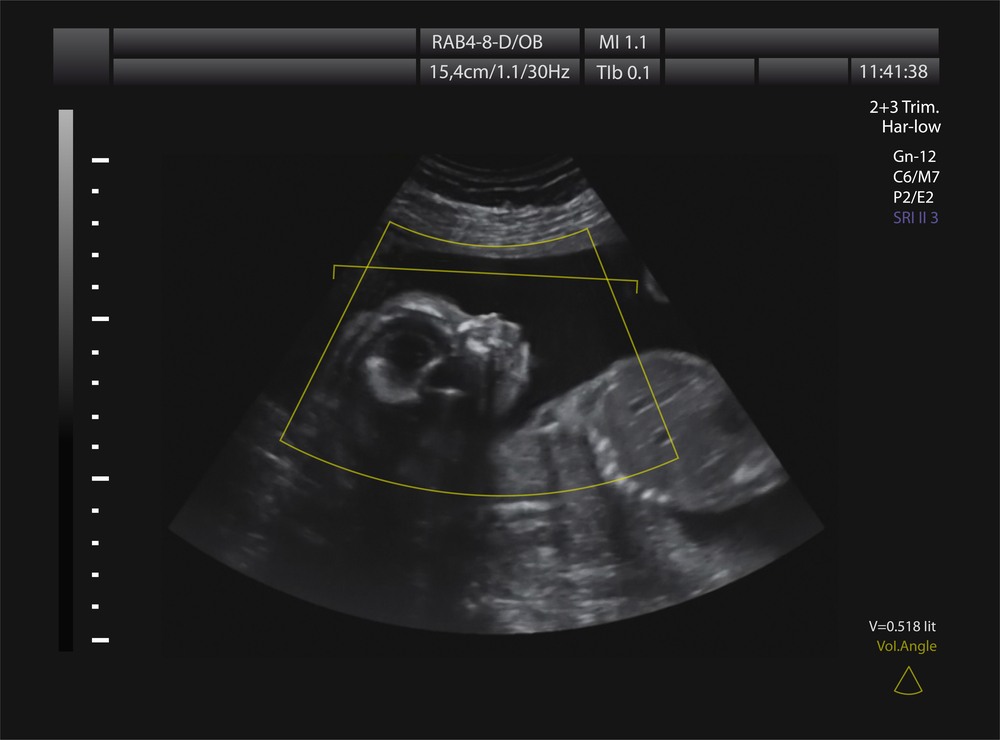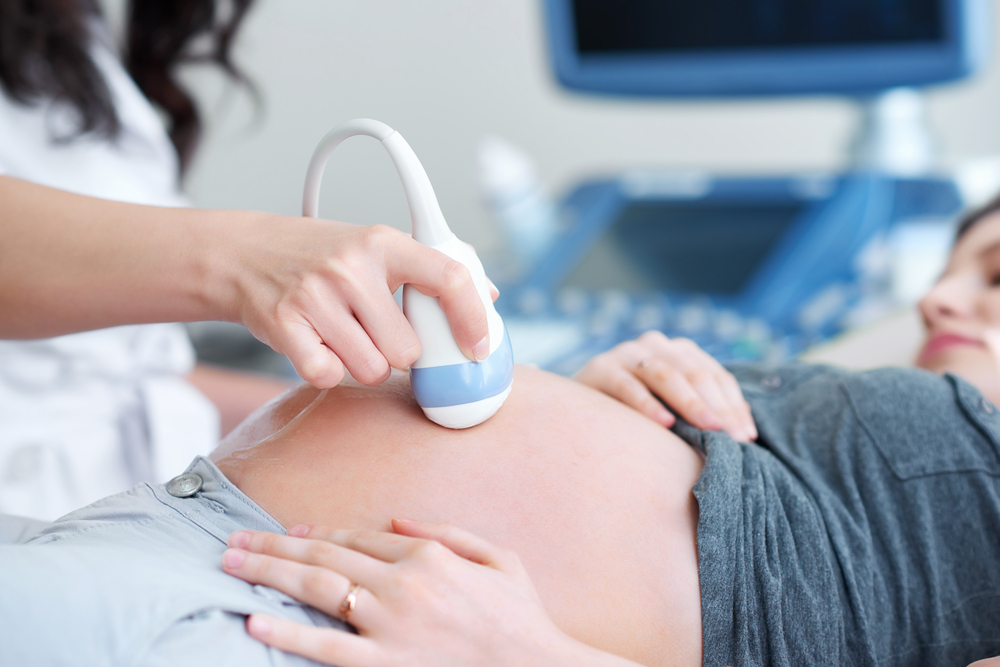Stages of Fetal Development
Is a fetus a child who has the same right to life as a person outside the womb, or is it nothing more than a clump of cells that happens to be part of a woman’s body? This controversial question has divided people throughout the nation. Pro-life advocates argue that a fetus’ size, level of development, environment, and level of dependency don’t matter as conception is the start of human life and a fetus is a living being. Meanwhile, those who take on a pro-choice point of view hold to the opinion that a fetus isn’t really a “human”, especially in the early stages of development, and a pregnant woman’s wishes take precedence. Understanding what science has to say on the topic can help an individual understand what pregnancy is and how fetal development works in order to make informed personal decisions.
Stages of Prenatal Development
The three stages of prenatal development are the germinal stage, the embryonic stage, and the fetal stage. The germinal stage is the first two weeks after a sperm has fertilized an egg in the mother’s womb. The germinal stage runs from the start of the third week to the end of the eighth week of pregnancy. The time period from the start of the ninth week until the time the baby is born is called the fetal stage.[1] It is during this time that medical professionals refer to the unborn child as a fetus rather than an embryo.
Stages of Fetal Development
Fetal development is divided into three parts: the first trimester, the second trimester, and the third trimester.
First Trimester
The first trimester of pregnancy lasts from the beginning of the first week to the end of the thirteenth week. For most of this time, the unborn child is considered to be an embryo. However, during the last three weeks, it’s officially a fetus. The unborn child’s systems start forming during this time period and a healthcare provider can hear a heartbeat by the sixth week of pregnancy. However, the first trimester is not without risk, as most miscarriages tend to happen during this time period. In up to 66% of cases, this isn’t a woman’s fault; rather, the pregnancy ends because the egg and/or the sperm did not have the right number of chromosomes. Other common causes of miscarriage include irregular genes and maternal health problems such as infections, thyroid problems, and hormonal problems.[2]
Second Trimester
The second trimester lasts from the beginning of the fourteenth week until the end of the twenty-sixth week. It’s during this time that the fetus starts looking like a miniature human being. Development of all major organs will be completed by the end of this trimester. The baby puts on weight and a woman can feel the baby move around. The fetus also gains the ability to suck and swallow. During this trimester, depending on the position of the fetus during an ultrasound, a medical care provider can tell if the baby will be a boy or a girl. The risk of miscarriage is greatly reduced as the fetus’s basic systems are already formed.
Third Trimester
The third trimester runs from the start of the twenty-seventh week of pregnancy until the end of the fortieth week. The infant is now covered with a white film called vernix caseosa. During this time, the fetus grows in size and gains weight. It can open their eyes, breathe, and make large movements. In most instances, the fetus’s head will move down toward the pelvic region to prepare for entry into the world. However, in some cases, a fetus may remain upright in what’s known as the breech position and a doctor will need to perform a C-section to prevent a stillbirth.
Fetal Growth and Development Week by Week
In the first two weeks, a woman’s body is preparing to release an egg.
In the third week, a woman ovulates. If the woman has had intercourse, the man’s sperm will fertilize the egg and the egg will become a zygote. Experts agree that it is at this point that a new human has come into being.
The fourth week is a busy one. The zygote creates new cells and becomes a blastocyst. The blastocyst moves into the uterus and implants itself into the uterine lining.
In the fifth week, the embryo’s systems start forming, and the heart starts beating.
By the time the sixth week is up, the embryo will have small buds that will eventually grow into arms and legs as well as basic facial features. The intestines and brain also start developing this week.
During week seven, the brain and head continue their development, and pain receptors begin forming.
The eyelids and ears form during week eight, as do the upper lip and nose. Nerve cells start branching out and breathing tubes running from the throat to the lungs begin developing.
The eyelids and ears become more clearly visible during week nine, as the baby’s toes form during this time as well.
During week ten, the embryo’s systems come into place, and it begins to look like a tiny human being.
During the eleventh week, the baby starts moving around, even though the movements can’t be felt by the mother.
By the end of the twelfth week, the fetus can smile, open and close their fingers, hiccup, and even suck their thumb.
By the time the thirteenth week is over, the fetus will have fingerprints and the organs and veins will be visible through the skin.
During the fourteenth week, the fetus will start showing the ability to use facial muscles. The kidneys, which are now fully formed, will start working.
In the fifteenth week, the fetus can sense light even though it can’t open its eyelids. This is the earliest week in which a fetus’ sex can be determined by an ultrasound scan.
In the sixteenth week, the fetus’s legs become more developed and the head becomes more upright than it was in previous weeks. Eyelashes and eyebrows grow during this period and the tongue develops taste buds.
By the end of the seventeenth week, the fetus’ soft cartilage skeleton will start hardening and turn into bone.

During the eighteenth week, the fetus will begin to flex his or her arms and legs. A protective coating called myelin starts to form around the nerves at this time. This coating covers the nerves in the brain and spinal cord and allows for the transmission of electrical impulses along nerve cells.[3]
In the nineteenth week of pregnancy, the fetus’ ability to hear, smell, touch, taste, and see will improve. Now is a good time for a mother to talk and/or sing to the unborn child.
In the twentieth week, the fetus gains the ability to swallow, and the digestive system begins producing meconium. This is a mix of cells, protein, fats, and other components which is passed as the first poop either during late pregnancy or right after birth.[4]
In the twenty-first week, the fetus gets more active. Mothers will likely notice kicks and jabs against the walls of the womb.
By the time the twenty-second week is over, the fetus will look like a miniature newborn as facial features become distinct. At this point, it could survive outside the womb in the event of a premature birth but would need specialized care due to its small size, immature lungs, and feeding difficulties.[5]
During the twenty-third week, the fetus’s ability to pick up and recognize sounds improves.
In the twenty-fourth week, the fetus starts making breathing movements and gains the ability to open and shut its eyes. The survival rate for a baby born prematurely at this stage ranges from 60% to 70% [6]
In the twenty-fifth week, the baby puts on weight and the hair starts growing.
In the twenty-sixth week, the baby starts breathing in amniotic fluid, which is good practice for breathing in air after birth.
In the twenty-seventh week, the brain becomes increasingly active. The fetus starts sleeping and waking up on a regular schedule.
By the end of the twenty-eighth week, the fetus’s eyesight improves and he or she can sense light coming from outside the womb. The body’s growth catches up to that of the head, so the baby appears to be more in proportion than it was in earlier weeks.
In the twenty-ninth week, the muscles and lungs develop.
In the thirtieth week, the fetus grows and there is less amniotic fluid than before as the unborn child takes up additional room in the uterus.
In the thirty-first week, the fetus can turn its head from side to side. It is also putting on additional weight this week.
In the thirty-second week, the fetus’s movements become stronger and more coordinated. In most cases, the fetus will turn to the ‘head down’ position.
In the thirty-third week, the fetus continues putting on weight and growing.
In the thirty-fourth week, the nervous system and lungs continue maturing.
By the end of the thirty-fifth week, the kidneys will be fully developed, and the liver will be able to process waste products.
In the thirty-sixth week, the fetus will gain about an ounce a day in weight. The lungs are developing rapidly and will continue to do so for the next few weeks.
In the thirty-seventh week, the lungs and brain continue maturing.
In the thirty-eighth week, the liver and lungs keep growing, and the brain continues developing.
In the thirty-ninth week, the baby is already fully developed, but it will keep gaining weight and growing in size.
By the end of the fortieth week, the baby is ready to make an entry into the world. However, if you come to the end of this week and still haven’t given birth, don’t despair. Sometimes the body ovulates later in the menstrual cycle than expected, which means that you may be at an earlier stage of pregnancy than you’d originally thought. A medical care provider will likely monitor the pregnancy to ensure the fetus isn’t in distress and there are no complications.
What Trimester is the Most Critical for Fetal Development?

While each trimester of a fetus’s development is important, the first trimester is the one that is most critical for the development of an unborn child. It is during this time that an unborn child grows from a collection of cells to a mini-human with organs, skin, veins, a beating heart, bones, arms, hands, fingers, legs, feet, and toes. Facial features are visible even though they’re not functional. Unfortunately, because an embryo or fetus cannot live outside the womb during this time, some may try to dismiss the embryo or fetus as simply a collection of cells. According to the CDC, over 90% of abortions in the United States occur during the first trimester of pregnancy.[7]
There are many reasons why a woman may choose to end a pregnancy. Common ones include lack of emotional support, financial problems, feeling unable to care for a new life, and concerns over the ability to study and pursue a career. At Caring Network, we offer women the free early pregnancy services and emotional support they need to navigate this challenging time and learn more about the life growing inside them. We provide free pregnancy tests and ultrasounds to determine the age and viability of the fetus. We also offer emotional support and consultations to help pregnant women understand all their options and address their individual questions and concerns. If you or someone you know can benefit from our services, reach out today to learn more about how we can help!
Sources
1 Cherry, Kendra, MSEd (2023, March 11), Stages of Prenatal Development, retrieved from https://www.verywellmind.com/stages-of-prenatal-development-2795073.
2. (n.d.) retrieved from https://www.mayoclinic.org/diseases-conditions/pregnancy-loss-miscarriage/symptoms-causes/syc-20354298
3. (n.d.) retrieved from https://medlineplus.gov/ency/article/002261.htm
4. (n.d.) retrieved from https://kidshealth.org/en/parents/meconium.html
5. (n.d.) retrieved from https://www.mercyone.org/health-and-wellness/health-answers/womens-health/when-can-a-baby-survive-outside-the-womb
6. Mannarino, Meghan (2023, August 14), Your Guide to the Three Trimesters of Pregnancy, retrieved from https://www.forbes.com/health/family/guide-trimesters-of-pregnancy/
7 Diamant, Jeff & Mohamed, Besheer (2023, January 11), What the Data Says about Abortion in the U.S., retrieved from https://www.pewresearch.org/short-reads/2023/01/11/what-the-data-says-about-abortion-in-the-u-s-2/
